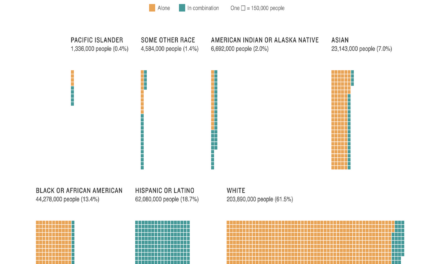
Hurricane Hilary News: Southern California Under Tropical Storm Warning

As the Category 4 storm moved through the Pacific Ocean on Friday, the National Hurricane Center issued its first-ever tropical storm warning for Southern California.
Source: National Oceanic and Atmospheric Administration
Note: All times are Pacific Time, which is three hours behind Eastern time.
By Madison Dong

By Judson Jones
Judson Jones is a meteorologist and reporter for The Times.
The National Hurricane Center on Friday evening issued its first-ever tropical storm warning for Southern California, including downtown Los Angeles, as a powerful Category 4 storm moved through the Pacific Ocean toward Mexico and the United States.
The storm, Hurricane Hilary, was less than 300 miles off the southern tip of Mexico’s Baja California Peninsula as of 8 p.m. in Los Angeles, the Hurricane Center said in an advisory. Meteorologists have said that the storm may cause “life-threatening and potentially catastrophic flooding” in Baja and the Southwestern United States, starting this weekend.
The warning issued on Friday indicates that tropical storm conditions are possible within the coverage area over the next 36 hours. The area stretches from the California-Mexico border to the Santa Monica area, and includes Catalina Island.
Hilary had sustained winds near 130 miles per hour, the Hurricane Center said. Tropical cyclones that have sustained winds of 39 m.p.h. earn a name. Once winds reach 74 m.p.h., a storm becomes a hurricane, and, at 111 m.p.h., it becomes a major hurricane.
A number of events in the Los Angeles area this weekend, including a Major League Soccer match and several Major League Baseball games, have been rescheduled because of the approaching storm.
Hilary formed as a tropical storm off the coast of Manzanillo, Mexico, on Wednesday and began moving west-northwest toward Baja California as it strengthened.
While the storm’s intensity was expected to fluctuate throughout Friday evening, it will weaken but remain a hurricane as it approaches the west coast of the Baja California Peninsula on Saturday.
Hilary will then likely become a tropical storm before reaching Southern California by Sunday night.
Image

Hilary’s exact landfall likely will not make much of a difference when it comes to the expected hazards in the region, meteorologists said.
Hilary will bring up to six inches of rain, with isolated amounts up to 10 inches, across portions of the Baja California Peninsula through Sunday night, with the possibility of flash flooding.
Portions of Southern California and Southern Nevada will record similar rainfall totals through Tuesday morning, which could lead to “dangerous and locally catastrophic flooding,” forecasters said.
A flood watch was issued for much of Southern California, including Los Angeles, Riverside, Orange, San Bernardino, San Diego and Ventura Counties. Other areas across the West can expect a few inches of rain.
Forecasters said that strong winds would occur ahead of the storm’s center.
Residents in Southern California raced to prepare sandbags and fill generators ahead of Hilary’s arrival as emergency officials prepared evacuation centers. Some expressed particular concern about the impacts to the mountain and desert regions.
The National Weather Service said runoff could “rage down valleys while increasing susceptibility to rockslides and mudslides.”
Mexico’s government issued a hurricane warning for the Baja California peninsula from Punta Abreojos to Cabo San Quintin. A hurricane watch is also in effect for the Baja California Peninsula’s west coast north of Cabo San Quintin to Ensenada.
A tropical storm warning and watch were also issued for multiple regions of the peninsula and mainland Mexico.
The Mexican army mobilized thousands of troops in anticipation of severe damage to infrastructure.
The Eastern Pacific hurricane season has been active this summer, but most of these recent storms have tracked west toward Hawaii, including Hurricane Dora, which helped enhance extreme winds that led to the devastating wildfires on Maui.
It is “exceedingly rare” for a tropical storm to come off the ocean and make landfall in California, said Stefanie Sullivan, a forecaster with the National Weather Service in San Diego. The only tropical cyclone to truly make landfall in Southern California was an unnamed storm in 1939 that made landfall in Long Beach, she said.
However, storms have come close or weakened before coming ashore, still causing flooding and dangerous winds, like Kay, a post-tropical cyclone, last year. Sometimes storms even move across the state from Mexico; in 1997, Hurricane Nora made landfall in Baja California before moving inland and reaching Arizona as a tropical storm.
Hurricane season in the Eastern Pacific began on May 15, two weeks before the Atlantic season started. The seasons run until Nov. 30.
Complicating things in the Pacific this year is the development of El Niño, the intermittent, large-scale weather pattern that can have wide-ranging effects on weather around the world.
An average Eastern Pacific hurricane season has 15 named storms, eight hurricanes and four major hurricanes. The Central Pacific typically has four or five named storms that develop or move across the basin annually.
There is solid consensus among scientists that hurricanes are becoming more powerful because of climate change. Although there might not be more named storms overall, the likelihood of major hurricanes is increasing.
Climate change is also affecting the amount of rain that storms can produce. In a warming world, the air can hold more moisture, which means a named storm can hold and produce more rainfall, as Hurricane Harvey did in Texas in 2017, when some areas received more than 40 inches of rain in less than 48 hours.
Researchers have also found that storms have slowed down over the past few decades.
When a storm slows down over water, it increases the amount of moisture it can absorb. When the storm slows over land, it increases the amount of rain that falls over a single location, as with Hurricane Dorian in 2019, which slowed to a crawl over the northwestern Bahamas, resulting in 22.84 inches of rain at Hope Town over the storm’s duration.
These are just a few ways that climate change is most likely affecting these storms. Research shows there may be other impacts as well, including storm surge, rapid intensification and a broader reach of tropical systems.
Derrick Bryson Taylor, Jesus Jiménez, Orlando Mayorquin and Mike Ives contributed reporting.
A version of this article appears in print on , Section
A
, Page
8
of the New York edition
with the headline:
Tropical Storm Heads Toward Baja California. Order Reprints | Today’s Paper | Subscribe
Source: https://www.nytimes.com/article/tropical-storm-hilary-hurricane-california-mexico.html

















